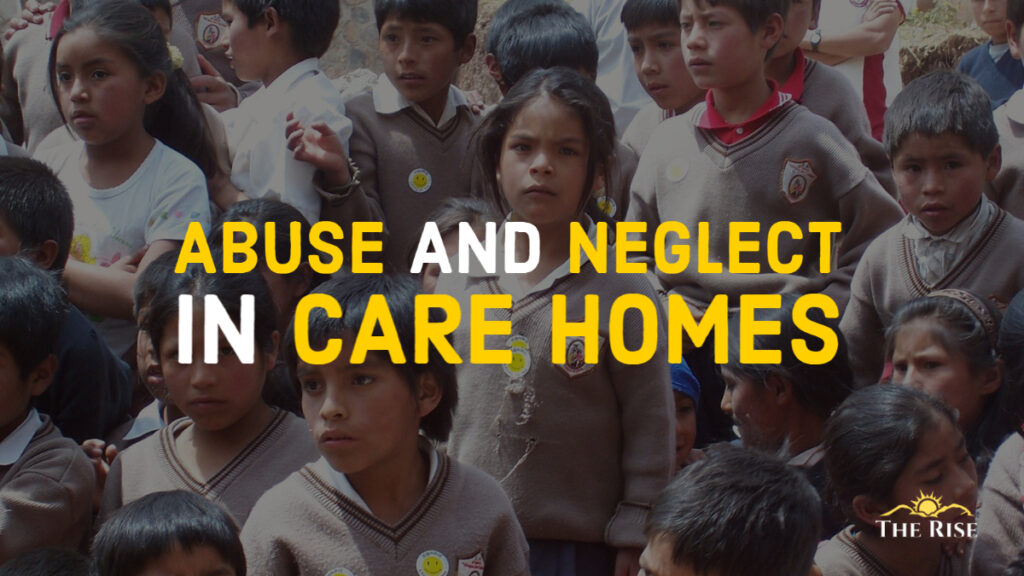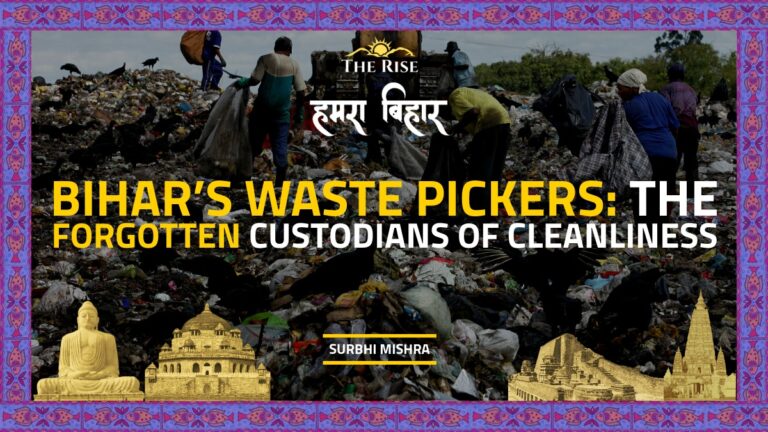The cases of abuse and neglect in care homes of India are ever-increasing. Without an established regulatory institution, and the lack of proper policies to protect the vulnerable, the forgotten children and elders are living a life of fear, trauma, and abandonment.
In 2017, the Women and Child Development Ministry reported around 470,000 children living in some form of childcare institution. However, in 2018, the number provided was 261,000. The question remains: Where are the rest of the children? The ever-increasing cases of insidious forms of violence and neglect in places that preach care & concern have left children and the elderly, who depend on these institutions, traumatized and violated. It is alarming to note that India has become a hotbed for child and elderly abuse in the world. Even with myriads of laws and legislation to protect the vulnerable, it is disheartening to see that the benefits have not been transferred to the victims in actuality. In light of these, the present article aims to comprehend the gravity of the problem in India and the loopholes that deny justice to the sufferer.
The ever-increasing cases of insidious forms of violence and neglect in places that preach care & concern have left children and the elderly, who depend on these institutions, traumatized and violated.
The Children of Misery, The Loopholes of Law, The Sanctuaries of Disguise
According to the 2020 Orphan Report, natural disasters are one of the most common reasons for creating orphans, and 79 percent of such deaths occur in Asian countries, like India, Pakistan, and Bangladesh, which are the countries with the highest number of orphans.
Further, a report by NHRM states that India has become one of the top destinations for child sex tourism, most of which is initiated by shady childcare institutions in the country. The situation is much more wretched since around one-third of the childcare homes in India are unregistered (Ministry of Women and Child Development, 2018). These orphanages and homes are neither regulated duly nor inspected. And many private institutions operate without a formal license. The reports submitted to the Government over the past few years have brought out the pathetic reality of these homes with children living in dubious conditions. As expected, in a majority of the cases reported against child abuse in children’s homes, the offenders were found to be the warden, watchman, and other staff (Nagaraj, 2016).
Also Read: Unravelling India’s Gender Slide
The existing laws possess certain complications and inadequacies that provide an escape clause for the offenders.
The survivors of such kind of abuse experience suicidal thoughts, behavioural problems, attachment disorders, depression, poor academic performance, and a tendency to become the perpetrators themselves in the future. It is also noteworthy that a better part of the abuse and neglect cases go unreported as children are unable to comprehend the depth of the abuse and the existing laws possess certain complications and inadequacies that provide an escape clause for the offenders. The children most often simply live with it, suffering in silence, their cries unheard.
Also Read: Upholding Civil Liberties in the 21st Century India
The Bombay High court was recently caught up in a web of controversy after the Judge decreed that without “skin to skin” contact, groping cannot be termed as sexual abuse under the Prevention of Children from Sexual Offences (POCSO) Act, 2012. Consequently, it throws light on the discrepancies in our legal system that have let the abusers walk free or with a negligible form of punishment. The Indian Penal Code (IPC) does not provide any definition of “child abuse” and often the perpetrators are punished under Section 509, i.e. insulting the modesty of a woman. It is also worth mentioning that abusers of the male child will escape the law since the legal definitions of crimes such as rape are gender-specific, i.e. “committed by men”. The narrow scope of these laws provides an escape route for the offenders, along with secluding the victims to endure their trauma with no relief.
The Elderly: Forgotten and Neglected
While analysing the problems of abuse in care homes, it is crucial to mention the overlooked area of elderly abuse in old-age homes. Agonizingly, India is the leading Asian country when it comes to elder exploitation and abuse, according to the International Network for Prevention of Elder Abuse, 2016.
India is the leading Asian country when it comes to elder exploitation and abuse.
The older population living in homes is extremely vulnerable. They are almost entirely dependent upon their caregivers for their basic needs, like food, medicine, etc. along with assistance for daily activities. Many of them might be suffering from chronic diseases. This, when paired with abuse or neglect, will hamper their mental health and physical well-being.
Also Read: Opening the pathway for Transgenders in India
As a volunteer in one of the old age homes in Chennai, I have witnessed the pathetic conditions in which they live. “No one wants me, neither my children nor the people here,” said Kanthamma, one of the inmates. There were 15 of them in extremely small and dingy rooms without proper lighting or fans. They wore torn-out clothes and waited for their food which arrived late but were happy to see someone who might help them in their misery.
There is a dire need for a regulatory institution with the sole purpose of inspection, audit, regulation of care homes, and safety and security of the inmates.
On paper, there are several systems and laws in place to help and support children & the elderly, including the Juvenile Justice Act, POCSO Act, and Maintenance and Welfare of Parents and Senior Citizens Act. However, there is neither proper regulation nor inspection of the shelter homes in the country which are increasingly becoming a hunting ground for abusers. From a deontological perspective, it is the inherent right of the child and the elderly to be protected and cared for. On that account, there is a dire need for a regulatory institution with the sole purpose of inspection, audit, regulation of care homes, and safety and security of the inmates. Rather than dealing with cases of abuse and neglect which have piled over, it is important to prevent such activities from the core. The local governments need to be equipped to support and help the inmates of such institutions. Their safety should be a priority instead of a burden. To conclude, it is the nation’s duty to protect its children and safeguard the elderly – for one represents the future and another, the past.
References
- Banerjee, D. (2020). The silent evil of elder abuse in India. Retrieved from TheNewIndianExpress: https://www.newindianexpress.com/opinions/2020/jun/22/the-silent-evil-of-elder-abuse-in-india-2159626.html
- Bhandare, N. (2018). Abuse Of Children In India’s Institutions Reveals Nationwide Crisis Of Reform. Retrieved from IndiaSpend: https://www.indiaspend.com/abuse-of-children-in-indias-institutions-reveals-nationwide-crisis-of-reform/
- INSAMER. (2020). 2020 Orphan Report. Retrieved from INSAMER: https://insamer.com/en/2020-orphan-report_2928.html
- Kaur, M. (2020). Abuse and neglect in orphanages, asylums and care homes. Retrieved from probono-india: http://probono-india.in/research-paper-detail.php?id=476
- Mander, H. (2015). Neglect and abuse: The reality of India’s elderly people. Retrieved from HindustanTimes: https://www.hindustantimes.com/columns/neglect-and-abuse-the-reality-of-india-s-elderly-people/story-2QYQf5DNGne1yVNuMHxcpL.html
- Morantz, G., Cole, D., Vreeman, R., Ayaya, S., & Ayuku David, B. P. (2013). US National Library of Medicine. Retrieved from ncbi.nlm.nih: https://www.ncbi.nlm.nih.gov/pmc/articles/PMC3929282/
- Nagaraj, A. (2016). Indian ‘orphans’ face abuse, neglect in Tamil Nadu care homes, activists say. Retrieved from Reuters: https://www.reuters.com/article/india-children-homes-idINKCN1090BY
Disclaimer: The views expressed in this article are of the author solely. TheRise.co.in neither endorses nor is responsible for them.
About the author
Nila Nair is pursuing Master's in Public policy and Governance from TISS Hyderabad. She is also a member of Commonwealth Youth Peace Ambassadors Network(CYPAN), and International Legal Council, Global Youth India.






